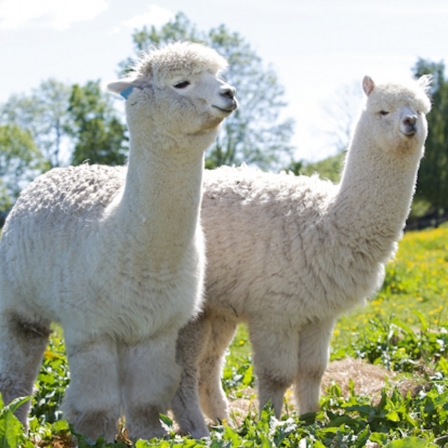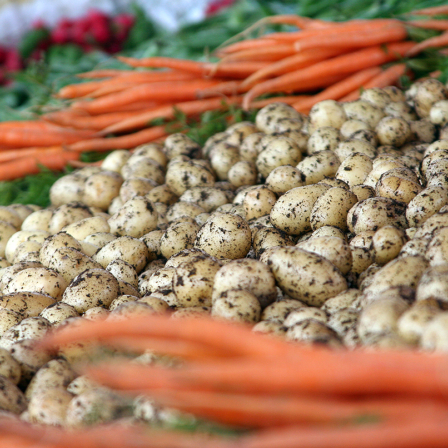ORGANIC AND LOCAL FOOD
Demand is high for local food, with the market set to grow. How can this growing demand best be met?
From trendy to the mainstream
Closed focus area (2010-2012)
The trend for organic and local food is now becoming a permanent phenomenon. And this development is changing the mainstream food sector. Small new operators working closely with producers and providing taste experiences are adding to the attraction of the market and bringing new meaning to it. The political atmosphere, too, is conducive to the emergence of organic and local food thinking by promoting sustainable development, the opportunities for rural areas and the development of local production.
In Finland, there is a need to shift the focus from production to the consumer, as well as to increase investments in marketing and business expertise. To succeed in the local food sector, those involved need to understand the requirements of the supply chain and the logic of business. Even when the food business is carried out on a small scale, it must be carried out just like any other business, and not as a sideline interest. Local food should be available to all Finns, not a luxury targeted at small consumer segments.
The local food market in Finland
The local food market lacks strong brands, which makes entry into the market easier. Consumers have also started to express their values through the choices they make. An example of this development is ethical consumer groups who favour local food. Another noteworthy consumer pattern is that in terms of local food consumer behaviour is not price sensitive, and the majority of consumers suggest they intend to increase their consumption of local food in the future, if it is easily available. Naturally, local food must also offer freshness and a high quality to justify the price.
In May 2010, Sitra published a survey of the local food market, which particularly emphasised the level of customer demand and the need for business expertise in the industry. A year after the survey, the local food market was already several times larger than anticipated. Minna Kantén, M.Sc. (Food Science) and a food industry specialist, estimated in the spring of 2011 that local food accounted for up to 8% of grocery sales in the retail sector. This would correspond to a sales volume of up to EUR 960 million annually.
Improving the availability and visibility of local food and accelerating market growth requires strong brands and a stronger market position for the most important players, such as retailers. The local food market is only at the beginning of its life cycle, so there is room for competition. The entry of new talent into the market will boost demand and benefit the whole industry.
A logistics chain based on networking
Cost-efficient logistics chains are basic requisites for the development of the local food market. For small producers, the challenge lies in balancing volumes that ensure a sufficient level of cost-efficiency with a sufficiently wide range of products. Product reliability must also be maintained.
Networking and cooperation between producers is one answer to this problem. Small farms can become more efficient by combining distribution and deliveries. In Finland, most farms are still small, and the supplier market has potential for a joint supply chain which would operate around the country on a decentralised basis. Several logistics systems are already being developed which will eliminate local and regional intermediaries and also integrate an online store and home delivery.
One example of creating a cost-efficient logistics chain is to integrate the wholesaling of local food with existing local wholesaling businesses. Wholesaling depends on sufficient reliability and volumes, which can be achieved through supplier cooperation. Advice on product ranges should be provided to suppliers to reinforce the cooperation relationship. A local food wholesaler also makes it possible to achieve a sufficient volume and cost-efficient distribution to sales outlets. Such wholesaling businesses are actually being set up for the purpose of improving the availability of local and organic food for institutional kitchens and the consumer market.
Concept and resources supporting strong growth
Success in the changing food market requires the creation and deployment of manageable local food concepts. Expansion must not lead to mass production but rather to the networking and cooperation of small-scale producers. The keys are concept creation and testing, obtaining premises in a location that best suits customers, recruiting and training personnel and the correct positioning of local food in the minds of customers. Producer orientation must give way to customer orientation, and producers, wholesalers and the trade must jointly focus their operations on customers and offer services that those customers want.
Sitra and food
Sitra has promoted the emergence of new business models in the organic and local food sector by means of various pilot projects and by finding venture capital investments. The goal of the pilots and investments is to help new businesses enter the market and to bring the distribution channels and small producers closer together.
Investments have targeted new demand-driven business ideas which promote the availability of organic and local food. The businesses must be both competitive and eco-efficient. Eco- and cost-efficient logistics are crucial, as is the integration of rural areas into the new online service network.
In the spring of 2011, Sitra made two venture capital investments in new business concepts aimed at solving some of the challenges to the local food industry’s logistics and distribution systems. The goal of Suomen Aitokauppa is to establish an easily approachable chain of grocery stores specialising in local food and serving the whole nation. The first shop was opened in Helsinki in the autumn of 2011. Suomen Luomutukku Oy represents a new approach to wholesaling. It is a service operator which helps professional kitchens simplify the sourcing and use of organic food.
Sitra is involved in a project where the City of Helsinki Wholesale Market is being developed into a food district in the style of Borough Market in London. The project is a key element of the City of Helsinki’s Food Strategy and of its hosting the World Design Capital year in 2012. This centre for good food will expand nationally to create opportunities for the emergence of local food ecosystems all over the country. It will provide sales and marketing training to local and organic businesses, offer teaching and demonstration kitchen services and act as an ambassador for a revitalised food culture. The good food centre will be a meeting place for anyone interested in good food.






LATEST